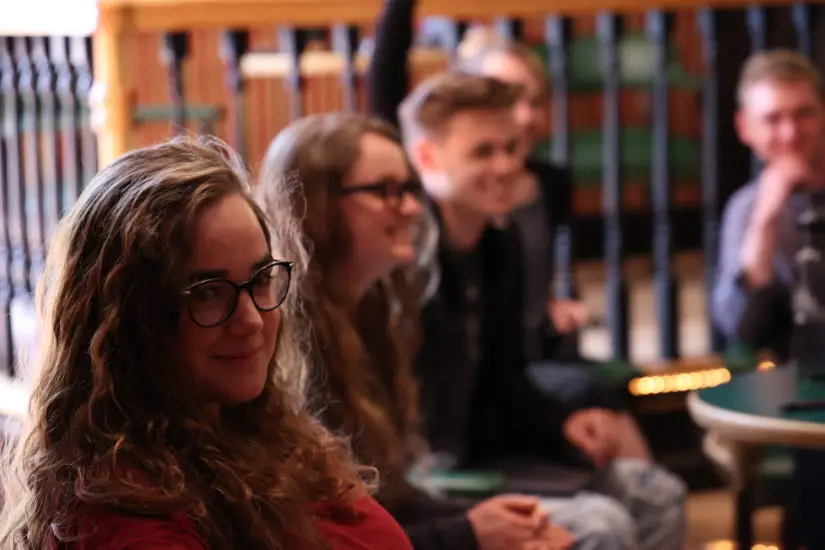Encourage Your Student to Prioritize Community in the Digital Age

Community is a core element of our lives. Without the context of community and relationships, nothing else will have a lasting impact.
Our current culture struggles to cultivate community. We’re increasingly divided, isolated, and disconnected from each other. This is, in part, due to the digital environment that we live in.
We live in the digital age when entertainment, work, and yes, even relationships and community, all happen in the digital world. There are tremendous advantages to this environment but it also comes with challenges.
In the midst of so much digital connection, we are in danger of losing more personal, face-to-face forms of connection and community.
How can you encourage your student to use the advantages of digital technology wisely, while maintaining a priority for deep and meaningful community and relationships?
Using Digital Tools Intentionally
Many digital tools like social media were established originally to help people facilitate community that transcended distance. But over time, these tools that were meant to cultivate relationships ended up posing challenges to them.
The future of education in your inbox.
Get productivity tips, commentary, and Unbound updates sent to you!
Encourage your student to use their digital tools intentionally for the purpose of building strong relationships and community. Help them use their social media accounts to connect with friends far away. We can approach social media in an isolating way or in an intentional way that draws us into connection with other people.
The big question here is “why?”. Why does your student use social media? What benefits are they expecting to receive by using it? The answers to those questions can be very helpful in structuring social media usage that cultivates productive community rather than creating obstacles to that community.
Taking Breaks When Necessary
One of the big myths we believe when it comes to digital technology is that we can’t live without it. There are certainly situations where taking an extended break from digital technology isn’t practical for work purposes. But most of the time, we can afford to take a break!
Helping your student build rhythms of digital silence is important. It helps increase their mental health and awareness and helps to diminish the anxiety and pressure that oftentimes accompanies heavy digital technology use.
Taking a break could be as simple as spending a day away from the smartphone. It could also be as ambitious as breaking from social media or digital tech use for a longer period of time.
In the midst of that break, encourage your student to pursue community and relationships face-to-face. Encourage them to meet for some time with a friend, mentor, or family member.
Prioritize Community
There’s a big world outside of our digital environments. It’s filled with people, each with a story. C.S. Lewis famously reminded us that, “There are no ordinary people. You have never talked to a mere mortal. Nations, cultures, arts, civilizations – these are mortal, and their life is to ours as the life of a gnat. But it is immortals whom we joke with, work with, marry, snub and exploit – immortal horrors or everlasting splendors.”
The lasting impact of our lives happens in the context of relationships and community. We ought to prioritize this above any “mere mortal” digital tools or experiences.
Encourage your student to invest in what matters most: meaningful relationships. Help them use their digital tools to serve that purpose, rather than creating an obstacle to it.



